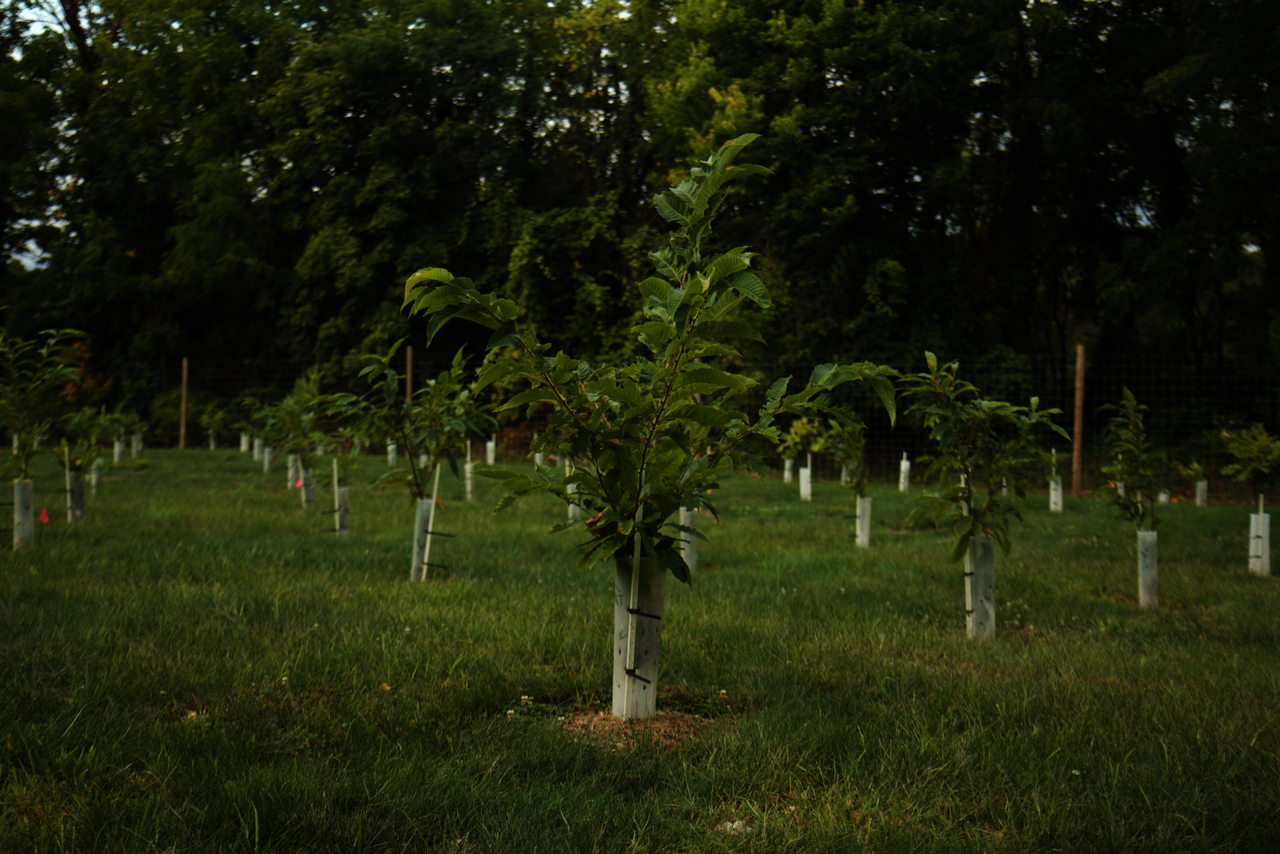Recent Headlines

Public Input Sought on American Chestnut Project
USDA comment period open through July 21
SYRACUSE, N.Y. – June 16, 2025 — You can play a vital role in restoring the American chestnut tree to northeastern forests by participating in the open comment period for the blight-tolerant ‘Darling’ variety developed by researchers at the SUNY College of Environmental Science and Forestry (ESF).
The U.S. Department of Agriculture (USDA) completed its regulatory review of the Darling 54 American chestnut tree and issued a preliminarily finding that it is “unlikely to pose a plant pest risk.” This favorable decision by the USDA’s Animal and Plant Health Inspection Service (APHIS) represents a significant step toward restoring this iconic species to forests in the eastern United States.
The USDA-APHIS has begun a 45-day open comment period for its review of Darling chestnut, marking the final step in this process.
“Submitting a comment by July 21 is a great way to show your support for the project,” said Dr. Andrew Newhouse, director of the American Chestnut Research & Restoration Project at ESF.
The American chestnuts (Castanea dentata) were once a dominant tree species within the eastern U.S. forests, comprising up to 25 percent of the trees in parts of its natural range. A century ago, the species was nearly wiped out by chestnut blight, a fungal disease introduced from Asia. Its loss significantly disrupted forest ecosystems and rural economies throughout the Appalachian region.
The Darling 54 variety was developed by ESF’s American Chestnut Research and Restoration Project in collaboration with American Chestnut Restoration, Inc. and SilvaBio, with support from many others. It is the first conservation-focused forest tree to complete a full USDA regulatory review. The project’s goal is to reintroduce diverse and resilient trees to help restore forest health and biodiversity.
“Planting more trees is critically important, but we need trees that can tolerate exotic pests and pathogens,” said Newhouse. “Darling 54 American chestnuts are safe, effective, and stable, with better blight tolerance than any American chestnut we’ve tested so far. ‘Darling’ and newer varieties now being developed will contribute to more resilient forests for future generations.”
While the USDA approval will put the project one step closer to distributing the Darling 54 chestnut, other regulatory agencies still have to complete their reviews of the tree.
“APHIS is one of three federal agencies reviewing Darling chestnuts, so while their approval is a considerable milestone for our project, other steps are necessary before Darling trees can be planted outside of research plots. This is the first time these agencies have evaluated a plant that is intended to persist in the wild, so the process is extensive and rigorous,” said Newhouse, “but once complete, has the potential to facilitate other uses of biotechnology in conservation.”
USDA-APHIS started its review in 2020, followed by a public comment period in 2022 that drew thousands of positive responses from individuals and organizations nationwide. ESF submitted a revised petition in 2024 with a corrected name for the chestnut along with additional updates to the original submission. The current USDA determination reconfirms the tree’s safety and completes this part of the regulatory pathway under the Plant Protection Act.
About SUNY ESF
The SUNY College of Environmental Science and Forestry (ESF) is dedicated to the study of the environment, developing renewable technologies, and building a sustainable and resilient future through design, policy, and management of the environment and natural resources. Members of the College community share a passion for protecting the health of the planet and a deep commitment to the rigorous application of science to improve the way humans interact with the world. The College offers academic programs ranging from the associate of applied science to the Doctor of Philosophy. ESF students live, study and do research on the main campus in Syracuse, N.Y., and on 25,000 acres of field stations in a variety of ecosystems across the state.